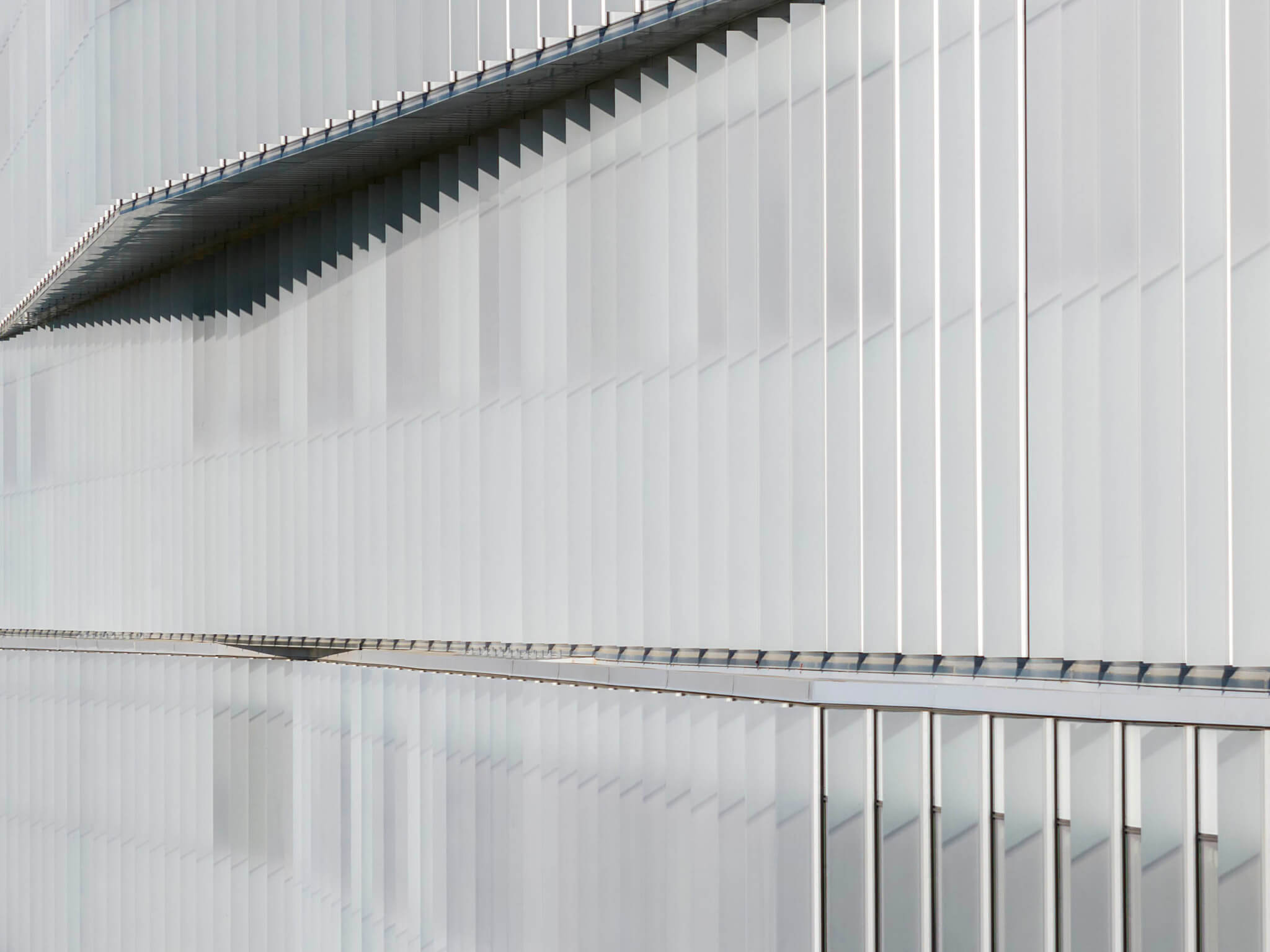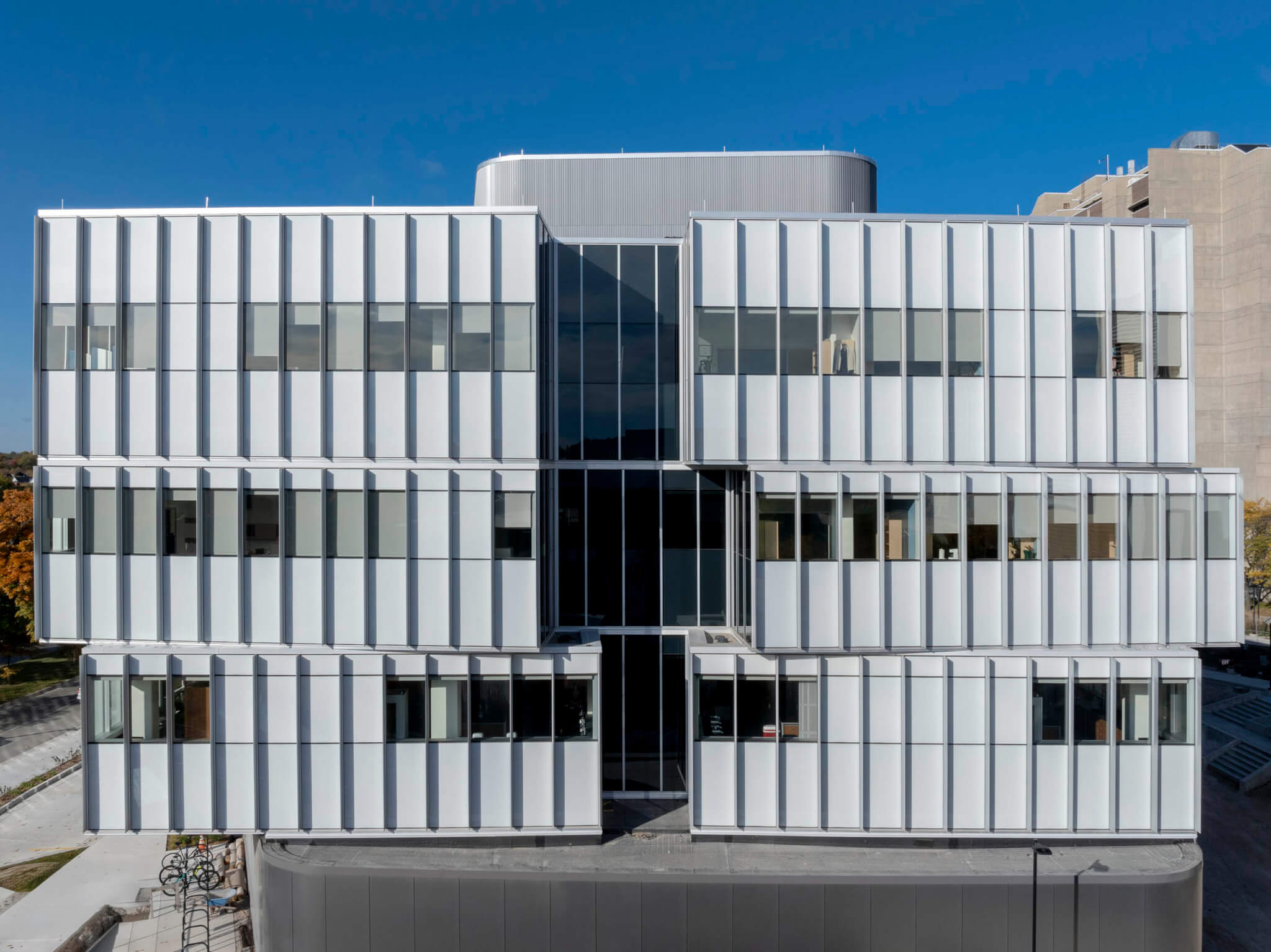Approached from an oblique angle, a facade of opaque and transparent glass at the University of Wisconsin–Milwaukee’s (UWM) new Chemistry Building appears to defy its own physicality. Windows look as if extending past their edges. Reflective elements register sometimes as transparent, other times as solid. Vertical fins lining stacked, undulating surfaces suggest an ephemeral field of continuities. An entire assembly flickers with sky.
Then, seen head-on, order comes into focus—horizontal bands marked with pronounced gray joint lines, cut evenly by slender fin profiles less than one-inch thick. A regular system of clear and back-painted glazing modulates slight deviations, keeping edges crisp and the overall volume legible.
The new Chemistry Building at UWM, designed by CannonDesign in partnership with Kahler Slater, marks the southwestern corner of campus, three miles north of downtown Milwaukee. Where hefty Brutalist buildings press against a residential neighborhood, the new facility—with lined white bands sandwiched by rounded, aluminum-clad volumes at the base and top—offers a lighter figure.

“We wanted to create a space that not only supports cutting-edge research and education, but also serves as a welcoming hub, connecting the chemistry department with the wider university and local community,” CannonDesign design leader Michael Kmak told AN.
To connect the building with its surroundings, the facade was conceived as an active surface. Aluminum fins echo the rhythm of the neighboring Physics Building, while transparency, reflection, and formal displacement counter its solidity. As exterior surfaces push outward and fold back, they both project activity into view and guide visitors to key entry points.

According to the design team, both the form and spatial organization were grounded in a metaphor: fins lining shifting volumes recall the braided structure of proteins, while an interior “spine” of incidental spaces unifies the program. Throughout the building, components of this dynamic order are often unsettled yet always controlled, a defined kit of parts permitted to misalign only by calculation.
At ground level, the planar curves of the podium—clad in sections of corrugated and smooth metal panels—engage the landscape, jutting in and out to shape space around the perimeter. Set back from the upper levels’ edge, glass entry walls offer views from campus, through the lobby, and out to the residential block beyond.

Higher up, at either end, the undulations reveal their depth, reading like fragments of a single rectangular volume pulled apart. Between white laboratory pieces, a jigsaw of darker floor-to-ceiling glass marks the interior spine, drawing further connections between inside and out.
Behind horizontal runs of windows, gently filtered daylight spreads across labs, classrooms, and breakout spaces. Throughout the interior, glass partitions—intended to spark curiosity through chance encounters—repeat between rooms and the interior spine. As natural light travels deeper into the building, its qualities continuously change through layers of surface and depth.
Project Specifications
→ Continue reading at The Architect's Newspaper
